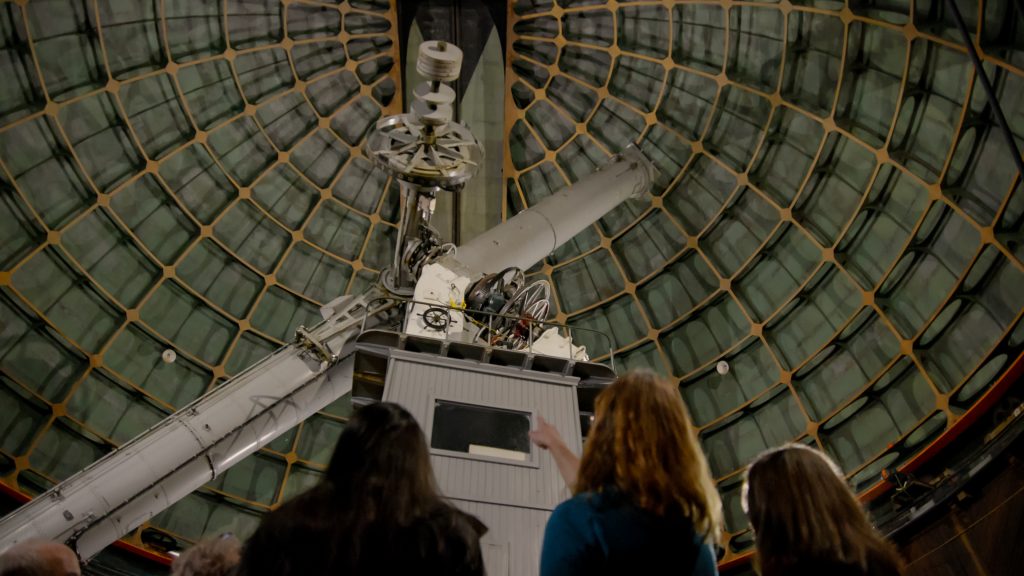
The James Webb Space Telescope is the most powerful, complex, and expensive space telescope ever built.
The $8.8 billion telescope is at the center of the new documentary “The Hunt for Planet B” which had its world premiere at the South by Southwest Film Festival. The film follows a group of scientists, most of them female, on their quest to find another Earth among the stars.
And last Friday night, the stars of the show participated in a panel discussion “Cosmic Breakthrough: Women in the Hunt for Planet B” with the film’s director Nathaniel Kahn.

To kick off the discussion, Kahn asked Natalie Batalha, a professor of astrophysics at UC Santa Cruz who is featured in the movie, if the U.S. is on the verge of detecting life in the cosmos and how does the Webb telescope fit into that.
“Well to answer your first question, I think absolutely we’re on the verge of finding extant life, primarily by looking at extant planets,” said Batalha, who was a science lead on NASA’s Kepler mission, which revealed a staggering diversity of planets beyond the solar system. The James Webb Space Telescope will enable scientists to detect the chemical fingerprints of hundreds of planets, she said. And Trappist-1 is a red star that harbors seven planets, which could contain life, she said.
The whole community is waiting for the James Webb to launch, said Sara Seager, an astrophysicist and a professor of physics and planetary science at the Massachusetts Institute of Technology. She has spent her career searching for the first Earth-like exoplanets and signs of life on them.
“I feel confident that there is life out there,” said Maggie Turnbull, an astrobiologist with expertise in identifying planetary systems that may be capable of supporting life. “It’s kind of incomprehensible to me that we would just have only one planet of what we know are definitely billions of planets at habitable temperatures throughout our one galaxy that could hold life.”
Turnbull feels less confident in finding life sometime soon.
“We can be on the verge of that for an indefinitely long time,” she said.
The James Webb Space Telescope is extremely powerful and will provide insights into the lifecycle of stars. Amy Lo, Deputy Director for Vehicle Engineering on the James Webb Space Telescope for Northrop Grumman in Redondo Beach, California, is featured in the movie and oversees the construction of the telescope, which is expected to launch into space in October.

“We’ve only looked for a blink of an eye in cosmic time scales,” said Jill Tarter, known for her work in the search for extraterrestrial intelligence (SETI). She is the Emeritus Chair for SETI Research at the SETI Institute. Tarter was portrayed by Jodie Foster in the 1997 movie “Contact.”
It’s really important to not just focus on the search for the next planet, but to clean up this planet, Tarter said.
“I think that’s the first challenge,” she said. “Because if we can’t do that, we’re just going to take our mistakes with us and do it somewhere else.”
The search for life circles back to earth and helps us understand and sustain life on earth, Batalha said.
“When you go out and explore and you think about other worlds and spend all of this time contemplating all of these other places, you can’t help at the end of the day but realize how precious life is and to love this planet all the more,” Batalha said.
Everything is interconnected, Turnbull said.
The ingredients for life are out there, Seager said.
“I think most of us think life is out there,” she said. “It’s just a matter of time.”
